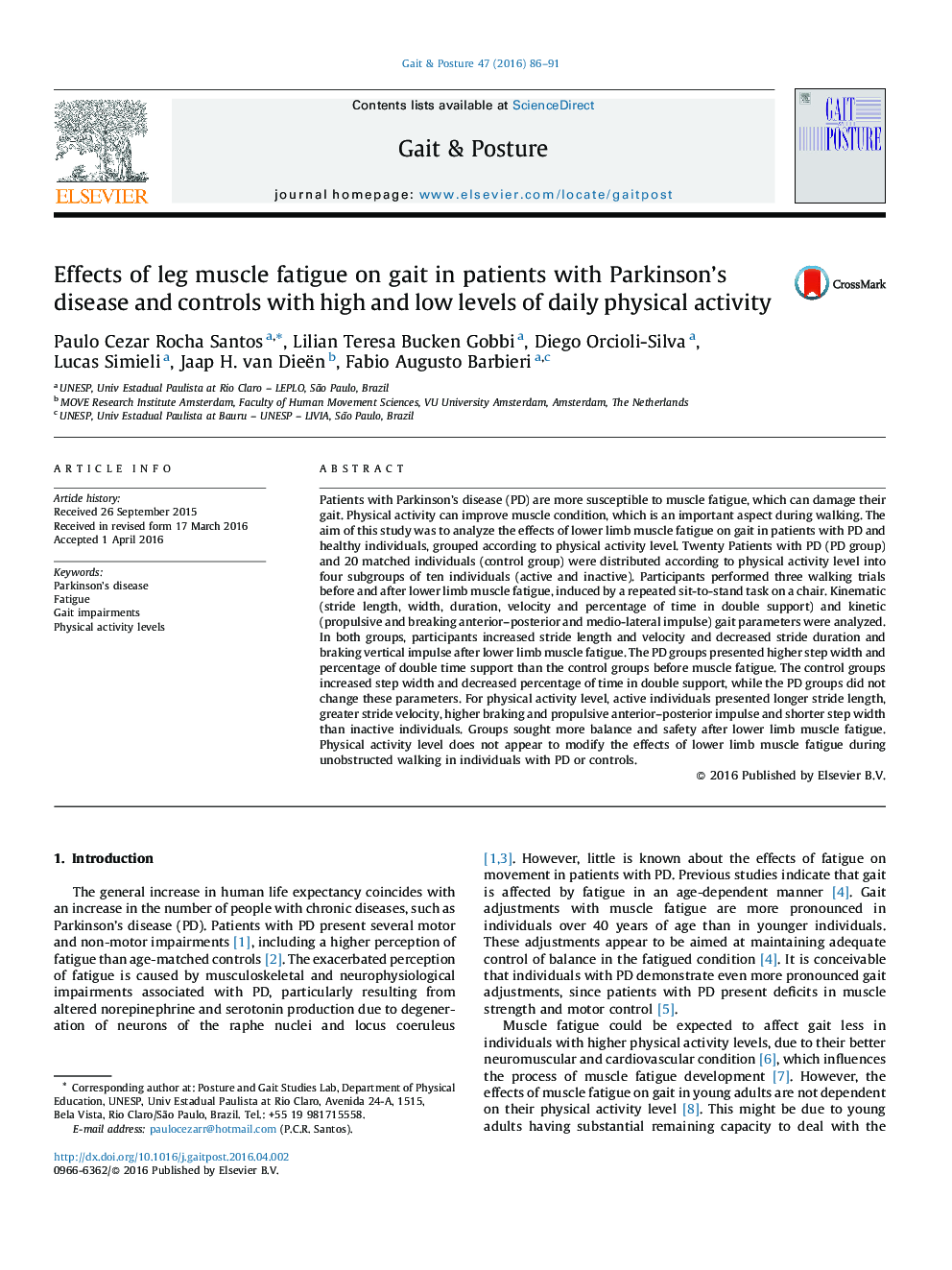| کد مقاله | کد نشریه | سال انتشار | مقاله انگلیسی | نسخه تمام متن |
|---|---|---|---|---|
| 6205888 | 1603848 | 2016 | 6 صفحه PDF | دانلود رایگان |
- Patients with PD and healthy individuals seek to improve balance and safety after fatigue.
- The gait adjustments after muscle fatigue were less pronounced in patients with PD.
- The physical activity level did not interact with lower limb muscle fatigue.
Patients with Parkinson's disease (PD) are more susceptible to muscle fatigue, which can damage their gait. Physical activity can improve muscle condition, which is an important aspect during walking. The aim of this study was to analyze the effects of lower limb muscle fatigue on gait in patients with PD and healthy individuals, grouped according to physical activity level. Twenty Patients with PD (PD group) and 20 matched individuals (control group) were distributed according to physical activity level into four subgroups of ten individuals (active and inactive). Participants performed three walking trials before and after lower limb muscle fatigue, induced by a repeated sit-to-stand task on a chair. Kinematic (stride length, width, duration, velocity and percentage of time in double support) and kinetic (propulsive and breaking anterior-posterior and medio-lateral impulse) gait parameters were analyzed. In both groups, participants increased stride length and velocity and decreased stride duration and braking vertical impulse after lower limb muscle fatigue. The PD groups presented higher step width and percentage of double time support than the control groups before muscle fatigue. The control groups increased step width and decreased percentage of time in double support, while the PD groups did not change these parameters. For physical activity level, active individuals presented longer stride length, greater stride velocity, higher braking and propulsive anterior-posterior impulse and shorter step width than inactive individuals. Groups sought more balance and safety after lower limb muscle fatigue. Physical activity level does not appear to modify the effects of lower limb muscle fatigue during unobstructed walking in individuals with PD or controls.
Journal: Gait & Posture - Volume 47, June 2016, Pages 86-91
